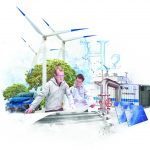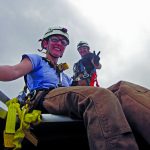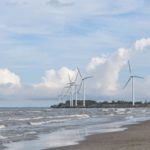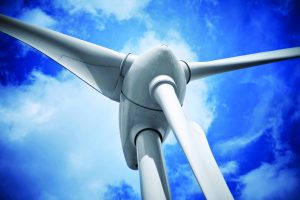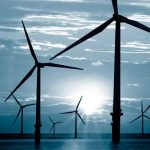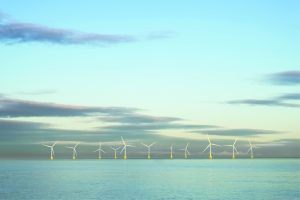The basic structure of a blade is made with adhesive, strings, and ropes. If you take a rope and give one end to your dog and you hold onto the other end, you could pull him around the shop. But if you took the same rope and tried to push him with it… Well, I don’t have to tell you how well that would work. The rope has its strength in tension. In a wind turbine blade, we place the fibers in specific directions so that we gain the strength of the fibers while in tension. That is one of the important things that a blade technician has to consider when working on a blade. It is important to place the fibers in the proper direction.
Wind turbine blades have complex airfoils designed to efficiently extract energy from the wind. Blades are the one component that are exposed to the elements all day, 365 days a year. The blades run with varying loads composed of structural and aerodynamic loading. These blades take a beating. Sometimes people try to relate wind turbine blades to airplanes, but as a friend of mine says: “You would be pretty amazed if you saw an airplane doing cartwheels all day and survive.” The loads for the two are not the same.
It would be great if, during maintenances, you could easily access the blades so that you could inspect them closely. The best that most groups can do is to scan the blades with binoculars, spotting scopes, and high-powered cameras. This does work to catch some issues but it is not the same as being right up on the blade itself. But as you know, to access the blades today take specialized skills or specialized equipment.
As a team member of a wind farm service crew, you should be constantly listening to the turbines. The noises that you should be familiar with include the noises from the blades. Any changes in noise from the blade require investigation. The best technicians are always looking at the blades from the ground and are also always looking at the blades while they are up on top of the machine.
For some reason, most blades built today seem to need leading edge protection. The leading edges of the blades are sometimes eroded away during operation. Due to this problem, there are companies that offer products and services to install a variety of options for leading edge protection (LEP). There is one option for the application of a protective tape which is very durable and resistant to erosion. Another option involves applying a liquid paint-type protection that is also resistant to erosion.
In my experience, the tape works well when it is applied in the shop, under a controlled environment. Installing the tape in the field has been hit-and-miss for me. I have seen LEP tape that was installed in the factory 10 years prior and is still working great. I have also seen field-applied tape torn and making noise within less than two wind seasons. The problem with tape is: If it does tear or lift an edge, it gets noisy. You can’t tell if the noise is coming from the tape, or from physical damage on the blade. Personally, I don’t fret very much over noisy tape. “Is it torn tape or real blade damage?” Torn tape can result in an on blade inspection by crane or rope. We have yet to see a liquid LEP product produce the same disturbing noise when it begins to fail.
The liquid LEP seems the easiest applied in the field but it too has its drawbacks. The primary challenge with LEP is that the protection has to be applied properly and uniformly. It would be nice if you could take the time to remove any ridges left by tape or brush marks. The original airfoil didn’t have these ridges.
Small changes in the airfoil affect its efficiency and ability to extract energy. This affects AEP.
Proactive operators will install LEP before damage happens to the blades airfoil. Other operators wait until after damage happens and then install the protection. Those who wait until the damage happens tend to pay more. This is because before the LEP can be applied, the damaged area has to be repaired and shaped. If the airfoil was damaged/increased drag entered the equation, energy production and subsequently money has already been lost. The losses of production are realized in the less-than-rated output portion of the power curve. If the operator waits long enough, secondary damage can occur to the blades’ composite structure and more significant repairs may be needed.
With blades, it pays to be proactive.

















